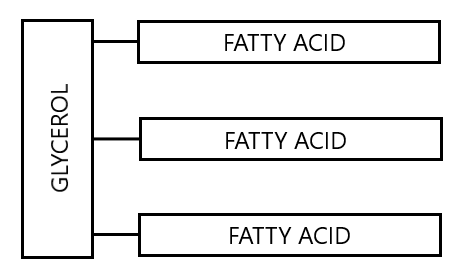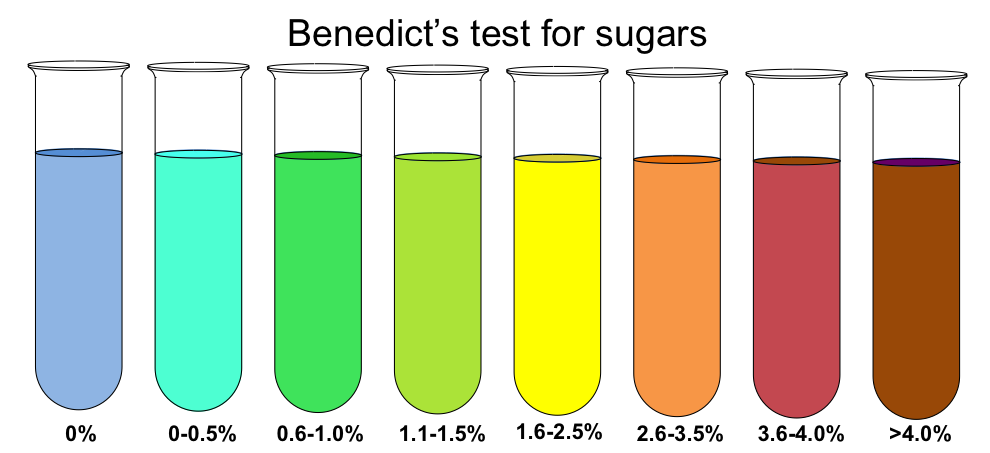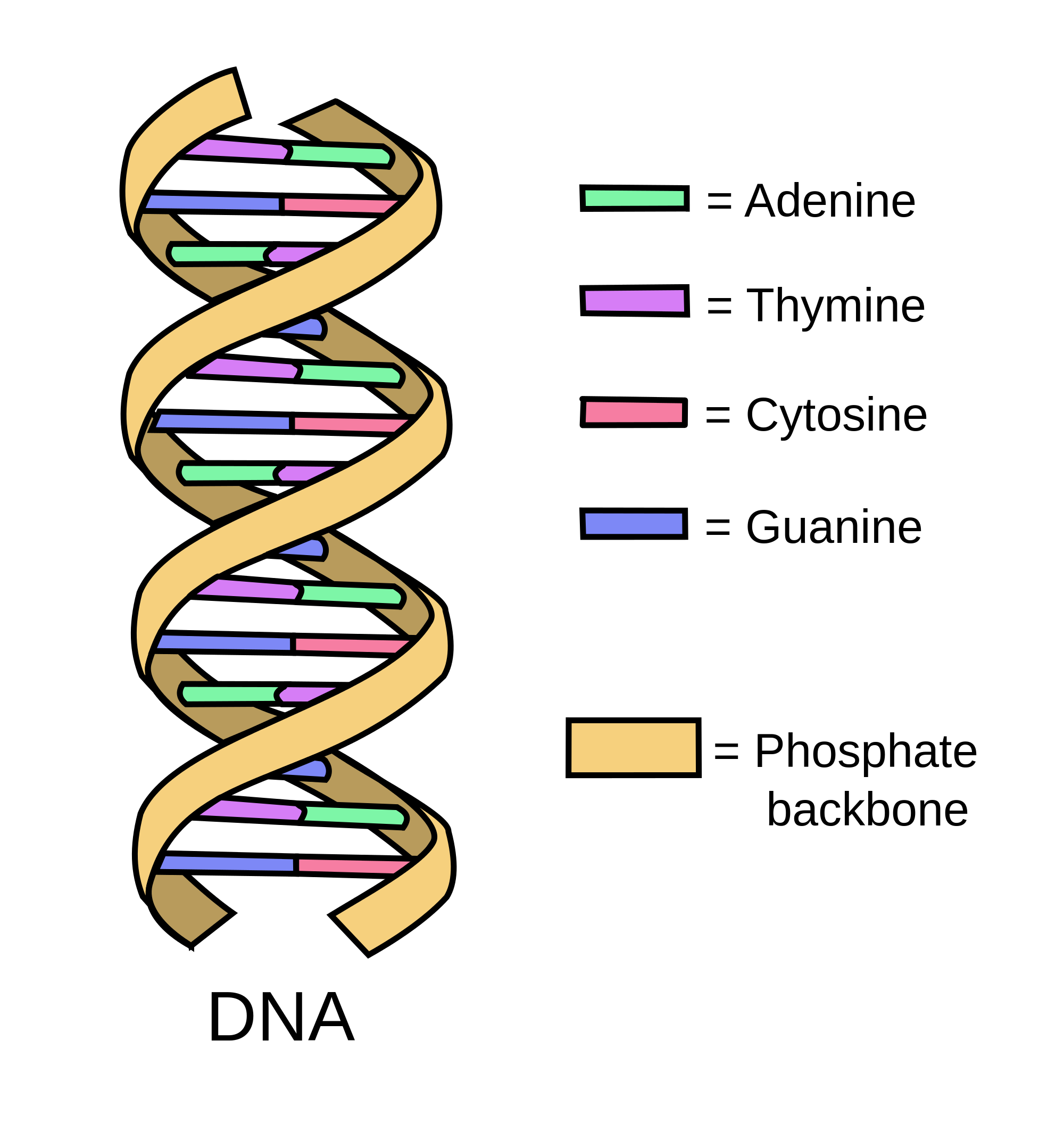Biological molecules
Carbohydrates
Carbohydrates are made of carbon,hydrogen, and oxygen. They are used as a source of energy for the body. There are three types of carbohydrates: Monosaccharides, disaccharides, and polysaccharides.
- Monosaccharides (i.e. glucose) are the most simplest form of sugars. They are a single unit and they cannot be broken down any further to make a more simpler sugar.
- Disacchardies are literally two monosaccharides joined together.
- Polysaccharides are large chains of monosaccharides joined together
- Starch is a polysaccharide made of large chains of glucose
- Glycogen is another polysaccharide made of large chains of glucose
- Cellulose is a polysaccharide made of large chains of glucose

Fats/oils
Fats are made of carbon, hydrogen, and oxygen. The oxygen content is lower than in carbohydrates. Fats have various purposes in the body:
- Source of energy. In fact, they have two times higher energy content than carbohydrates!
- Heat insulation
- Myelin sheath formation
- Cell membrane formation
Fats are made up of three fatty acid units attached to a single unit of glycerol:

Proteins
Proteins are made of carbon, hydrogen, oxygen, nitrogen, and sometimes sulfur or phosphorus. They are extremely important to the body and serve many different functions. here are a few:
- Growth
- Tissue repair
- Cell membrane formation
- Source of energy
Proteins are made of long chains of amino acids chemically bonded to each other. There are about 20 different amino acids that are found in the human body. Different combinations of these amino acids will give rise to different proteins.
For example, each of the different colored circles represent a different amino acid. They are joined in a specific sequence as shown below:

It is really important to understand here that the final 3D structure of a protein is derived from the specific interactions between amino acids that are joined in the protein chain.
The sequence of amino acids in the chain therefore creates the final shape of the protein, and the shape is what gives the protein its function.
This diagram below represents how a single chain of amino acids eventually turn into a complex 3D protein structure with a specific function.

For example: Consider amino acids A B C D and E. The hyphens represent a chemical bond between the amino acids.
Protein 1: A-B-C-D-E
Protein 2: A-C-B-D-E
In the example above, protein 1 has amino acids A through to E joined in order. Protein 2 on the other hand, has a slightly different amino acid sequence. Just from this slight difference in amino acid order, protein 2 will be completely different from protein 1 in terms of its function and structure. This is super important for you to understand.
Food testing
We can test for starch, monosaccharides, proteins, and fats in a given sample via the following tests:
- Starch test [Starch test]
- Add a few drops of iodine solution
- Blue/black coloration means starch is present
- Benedict’s test [Monosaccharide test]
- Add equal amount of benedicts solution into a solution of food and boil gently
- A colour change (from blue) signifies presence and quantity of monosacchrides

- Biuret test [Protein test]
- Add an equal amount of sodium hydroxide to a solution of food and mix
- Add a few drops of 1% copper sulphate
- A violet colour signifies the presence of protein
- Emulsion test [Fat test]
- Dissolve food in ethanol and pour the solution into a clean tube of water
- White emulsion signifies the presence of fat
DNA structure
As you may already know, genetic information is stored inside our DNA. Whilst you do not need to go into full depth with this, CIE wants you to understand the generic structure of a DNA molecule:

So first of all, a DNA has a double helix structure whereby two strands are coiled together. Each strands have chemicals called bases. The double helix is held together via pairs of bases that are attracted to each other from one strand to the other.
Bases will always pair up in the same way. Adenine (A) will always pair with Thymine (T). Cytosine (C) will always pair with Guanine (G). The diagram above demonstrates this pairing (i.e. green is always bonded to purple and pink is always bonded to blue).
Water
CIE wants you to understand the importance of water. Indeed, water is essential to the human body for many things. One of these things being the fact that water is an important solvent. This means that nutrients and wastes can be dissolved in water so that it can be transported around the body. Moreover, majority of our chemical reactions inside our bodies are controlled by enzymes. Enzymes cannot work unless it is in solution (i.e. in the presence of water).